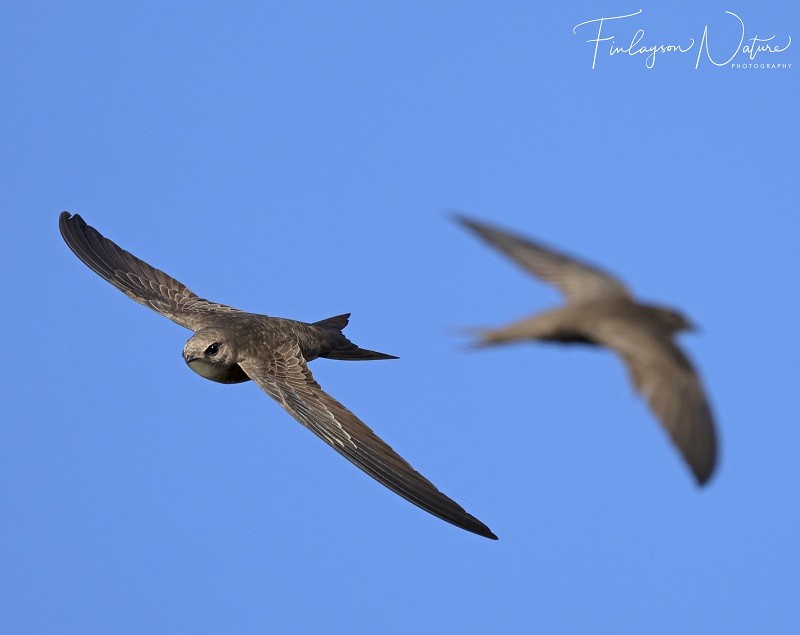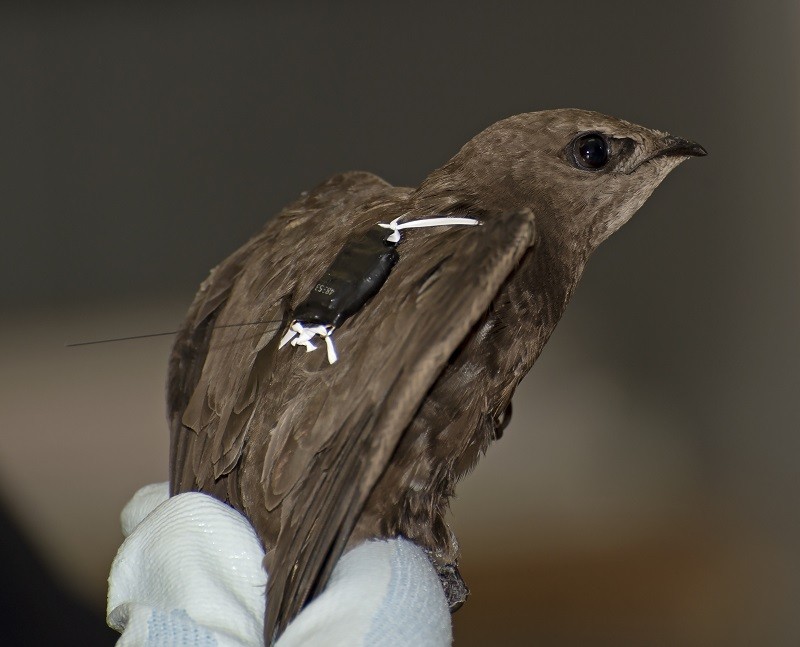The remarkable lives of Gibraltar’s swifts uncovered
A paper has just been published by the journal PLOS ONE which reveals the remarkable lives of pallid swifts that nest in the attic of the Gibraltar National Museum. ‘Birds with multiple homes. The annual cycle of the pallid swift (Apus pallidus brehmorum)’ details the incredible exploits of these birds, from when they leave for Africa after breeding until their return the following spring.
Scientists working at the Gibraltar National Museum and Gibraltar Botanic Gardens, Associate Campuses of the University of Gibraltar, along with members of the Gibraltar Ornithological and Natural History Society (GONHS), placed GPS tags on pallid swifts during the spring seasons of 2018, 2019 and 2020. They then waited for the birds to return the following year to see what information had been captured by the tags. Pallid swifts show remarkable nest site fidelity, with pairs returning to the same nests year after year, so the researchers were confident that they would be able to retrieve some of the tags.
Once retrieved, the results stunned the researchers, showing the incredible achievements of these small birds (their average weight is only 40 grams):
a) most pallid swifts left the breeding colony at the Gibraltar National Museum in August and returned the following March/April. They spent this time in Africa and remained airborne throughout, even sleeping on the wing.
b) pallid swifts spent a long period (August to November) in the Sahel Region (15o-20o N), south of the Sahara Desert, before heading further south into the rain forest (0o-10o N) where they remained until the following March/April. In the rain forest, pallid swifts reached as far as Cameroun, the Republic of Congo and the Central African Republic in the east, and between Senegal and Ghana in the west. From the rain forest they returned directly back to Gibraltar in a matter of days. These results are breaking the traditional mould of birds travelling between breeding homes to specific winter quarters. They show, instead, that the idea of a single winter home does not apply, in the case of these swifts at least.
c) the remarkable crossing of the Sahara Desert was monitored on a 4-hour basis in a single swift, which managed to cross in just over one day of continuous day- and night-flying. This bird started the desert crossing at 17:00 hours on the 14th August and completed the crossing by 23:00 hours on the 15th August.
d) one bird showed that it went to the same areas of Africa at the same time of year in both years. This reveals an incredible ability to find the same areas of airspace over Africa from one year to the next.
Commenting on the publication, Minister for the Environment, John Cortes added, "as someone who has researched bird migration, I am really pleased to see this published and proud of the team that has produced this work, and all the entities involved. Modern tracking methods mean that things about which we have speculated in discussion can now be scientifically proven, and it is particularly satisfying that a team from Gibraltar remains at the forefront of research into bird migration."
For further information please contact Dr Stewart Finlayson on +(350) 200 74289 or at stewart.finlayson@gibmuseum.gi


Pallid Swifts flying outside the museum colony in spring.
Pallid Swift with GPS tag attached.
Published: November 30, 2021
Other similar News
News
The #IceAgeEuropenow touring photographic exhibition arrives in Gibraltar
Published: March 16, 2019
18-20 Bomb House Lane
PO Box 939,
Gibraltar
